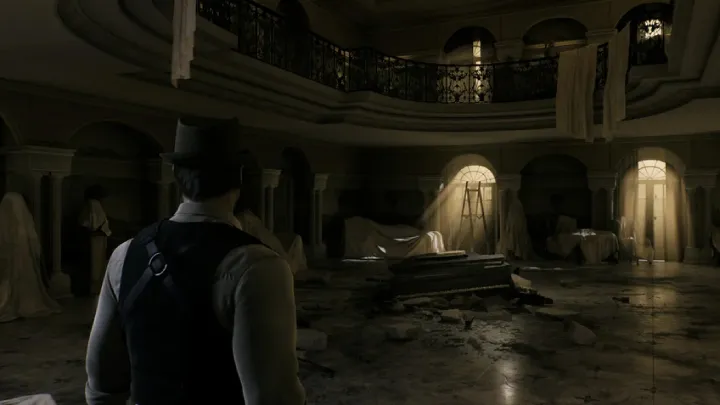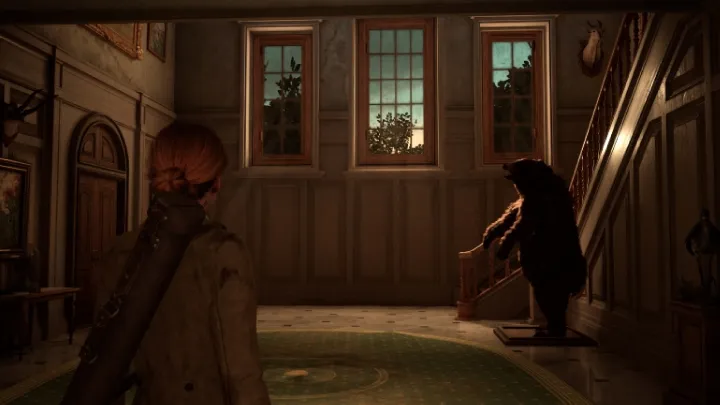Alone in the Dark is a pioneering survival horror game that combines exploration, puzzle solving, and combat with a dark, atmospheric narrative. The game challenges players to survive a nightmarish environment filled with supernatural threats while uncovering the mysteries of a haunted mansion. This guide focuses on how to approach the game effectively, offering tips on combat, puzzle solving, exploration, and understanding the story. Each section represents a key phase of the game to help players navigate Alone in the Dark strategically and enjoyably.
By following this guide, players can immerse themselves fully in the tense atmosphere, make smart choices under pressure, and uncover all secrets while experiencing the narrative as intended.
1. Starting the Journey and Understanding the Environment

At the beginning of Alone in the Dark, the game immediately sets a tone of suspense and tension. Players control the protagonist in a mansion filled with hidden dangers and eerie visuals. Moving slowly and observing every detail is essential to avoid unnecessary encounters and to gather clues for puzzles and story progression.
Familiarize yourself with the control system first. Understanding movement, camera angles, and interaction buttons allows smoother navigation through tight corridors and shadowed rooms. Alone in the Dark relies on atmospheric storytelling, so take time to notice lighting, environmental sounds, and objects that may seem insignificant at first glance.
2. How to Explore the Mansion Efficiently
The mansion in Alone in the Dark is large and complex, with multiple floors, hidden rooms, and secret passages. To explore efficiently, always check maps when available and mark areas that require items or keys. Avoid wandering aimlessly, as some areas can lead to encounters that are difficult to survive early in the game.
Pay attention to environmental clues such as paintings, furniture arrangements, and damaged walls. These often hint at secret passages or puzzle locations. Keeping a mental or written note of doors that are locked or areas that seem suspicious helps you plan a clear route through the mansion and saves time.
3. Combat Basics and Surviving Enemy Encounters
Combat in Alone in the Dark is tense and limited by resources. Weapons are scarce, and enemies are often faster or stronger than the protagonist. The best strategy is to assess whether to fight or avoid. Not every enemy needs to be confronted; sometimes stealth or strategic retreat is safer.
When engaging in combat, learn enemy patterns and strike with timing. Melee weapons are useful but require close contact, while firearms are limited. Conserve ammunition and always aim for high-impact targets when possible. Staying calm and maintaining distance can prevent taking unnecessary damage.
4. How to Solve Puzzles and Advance the Story
Puzzles are central to Alone in the Dark, often blocking progression until solved. Most puzzles require careful observation, item combination, or decoding environmental clues. Take note of symbols, notes, and objects in rooms, as they often hold hints for solutions.
Avoid guessing blindly. Experiment with combining items in your inventory and using them in specific locations. Many puzzles are designed to challenge logical thinking rather than reflexes. The more carefully you analyze the environment, the faster you can advance through the game without triggering traps or hazards.
5. Understanding the Narrative and Supernatural Elements
Alone in the Dark combines horror with a complex story that unfolds as you explore. Understanding the narrative requires attention to character dialogue, notes, and environmental storytelling. The supernatural elements often reflect deeper plot points, and ignoring them can make certain encounters confusing or more difficult.
Pay attention to audio cues, ghostly sounds, and visual distortions. These elements often signal a significant story beat or impending danger. Understanding how the supernatural influences the mansion and its inhabitants allows you to anticipate threats and uncover hidden layers of the story.
6. Managing Resources and Inventory Strategically
Limited resources are a hallmark of survival horror. In Alone in the Dark, managing health items, ammunition, and key objects is critical. Avoid wasting resources on minor threats and always prioritize items that are essential for survival or puzzle solving.
Organize your inventory to keep frequently used items accessible. Some rooms contain hidden stashes or containers with extra supplies, so thorough exploration pays off. Learning where to find critical resources ensures you can survive encounters and maintain momentum throughout the game.
7. Handling Tense Situations and Avoiding Panic
The game often places players in high-tension situations with enemies or environmental hazards. Maintaining composure is essential. Panic can lead to wasted ammunition, missed attacks, or triggering traps. Move deliberately, watch enemy movements, and take cover when necessary.
Observe sound and visual cues to anticipate events. In some cases, running past an enemy or hiding is safer than fighting. Learning to read the environment and timing your actions reduces risk and increases your chance of survival.
8. Exploring Secret Areas and Collectibles

Alone in the Dark rewards careful exploration. Many rooms contain hidden documents, items, and collectibles that enrich the story or provide gameplay advantages. Thoroughly examine shelves, drawers, paintings, and wall panels for hidden clues.
Secret areas often contain supplies that help in later stages of the game. Some collectibles offer backstory or additional context for supernatural occurrences. Taking the time to explore every corner not only provides material benefits but also deepens the player’s understanding of the game world.
9. Preparing for Boss Encounters and Major Challenges
Boss encounters and major threats in Alone in the Dark are often timed or scripted to test your skill and resource management. Prepare by conserving ammunition, healing items, and positioning strategically in advance. Learn attack patterns and exploit weaknesses whenever possible.
Observe the environment during boss battles. Sometimes traps, destructible objects, or terrain features can be used to your advantage. Understanding the narrative context of these encounters also helps in anticipating behavior and planning effective strategies.
10. Completing the Game and Understanding Its Themes
The ending of Alone in the Dark ties together the supernatural events, character motivations, and mansion’s mysteries. To fully appreciate the conclusion, reflect on choices made throughout the game, the paths taken, and the secrets uncovered. The narrative often rewards exploration, careful observation, and strategic decision making.
Take time after completing the game to revisit notes, documents, and unexplored areas. Some endings or story elements may only be revealed through thorough exploration and puzzle solving. The journey of Alone in the Dark emphasizes survival, psychological tension, and uncovering the unknown, leaving a lasting impression on players.
Conclusion
Alone in the Dark is a survival horror classic that challenges players to balance exploration, combat, puzzle solving, and narrative interpretation. By understanding the mansion layout, managing resources wisely, analyzing the supernatural story elements, and approaching threats strategically, players can navigate its horrors effectively. This guide provides a comprehensive roadmap to experience the game fully, ensuring survival, discovery, and immersion in one of the most iconic horror worlds in gaming history.
Summary
A complete how-to guide for Alone in the Dark covering exploration, combat, puzzles, resource management, and survival for a full horror experience.

















